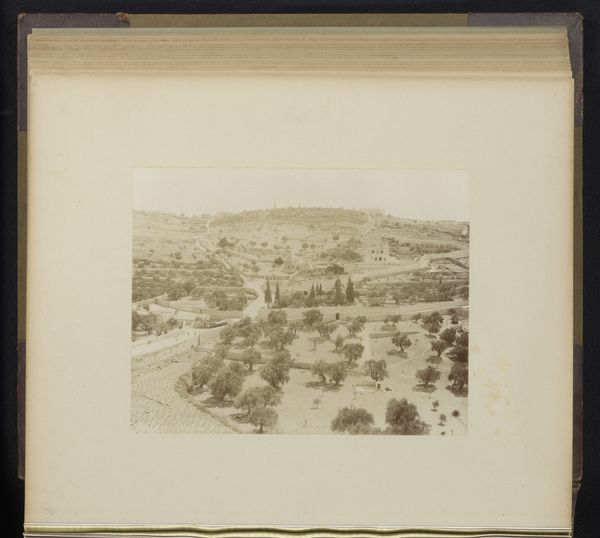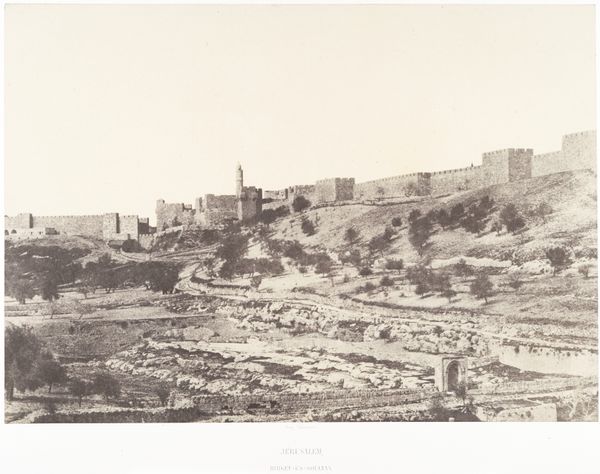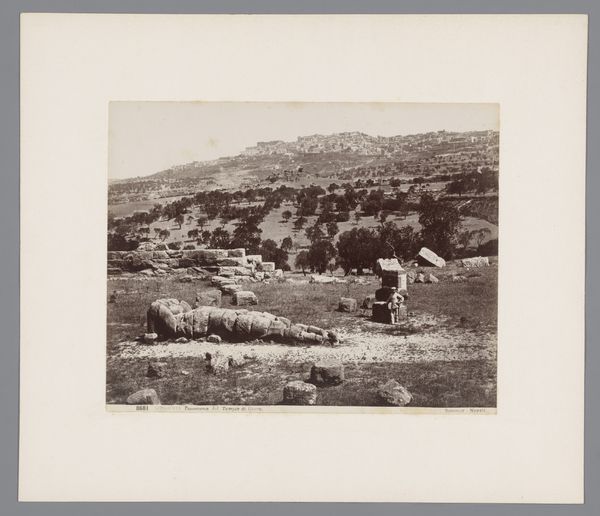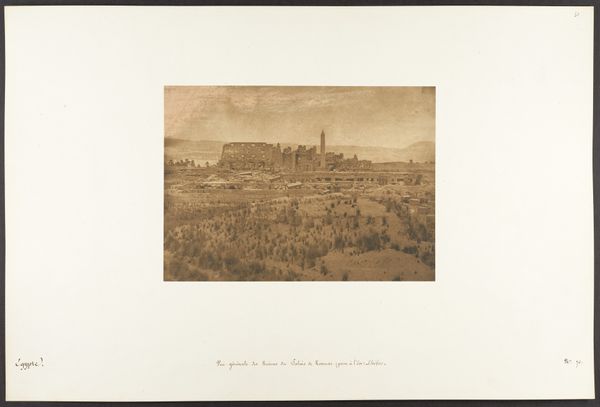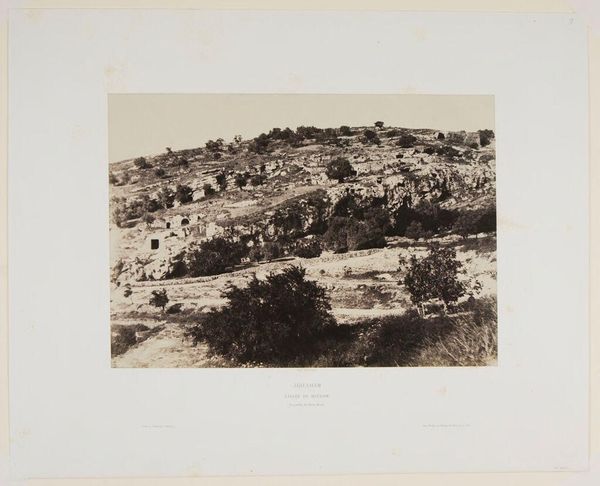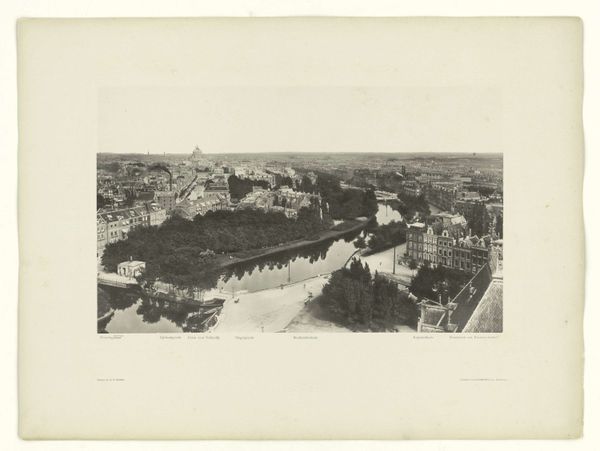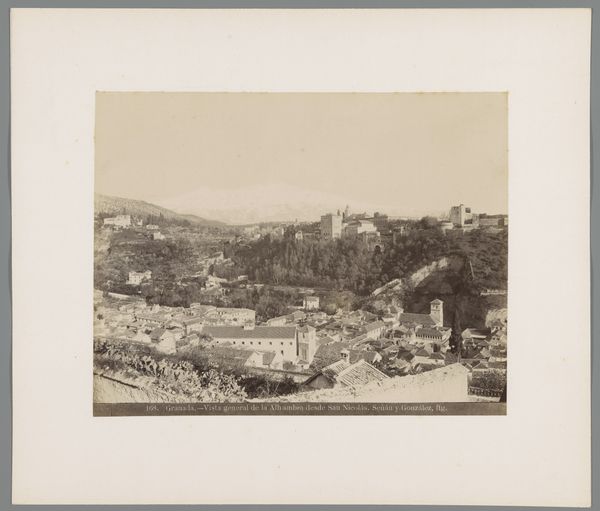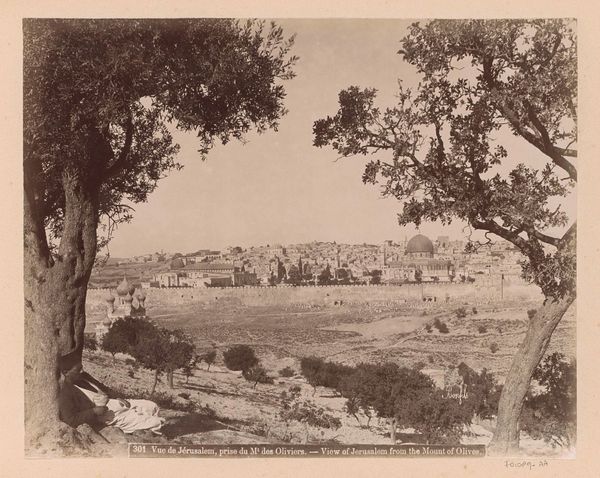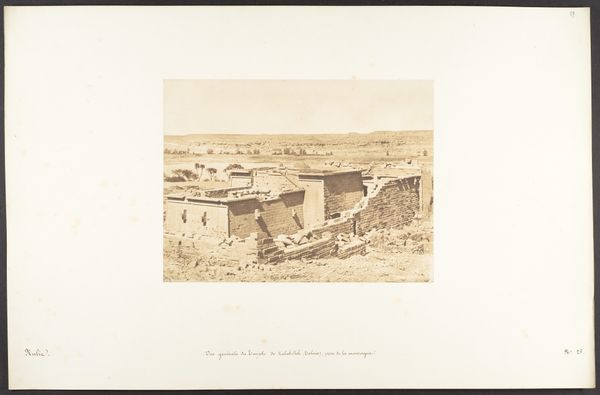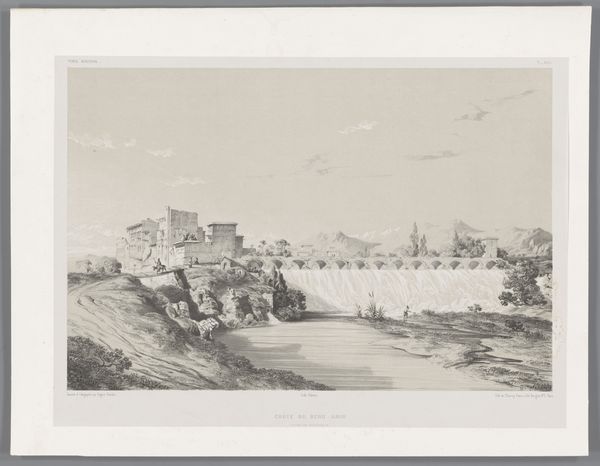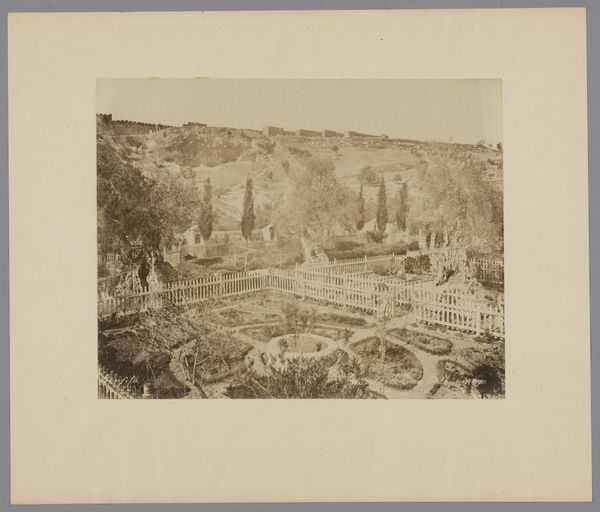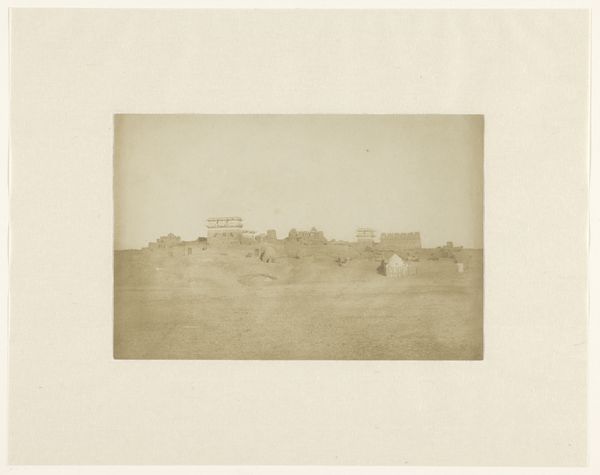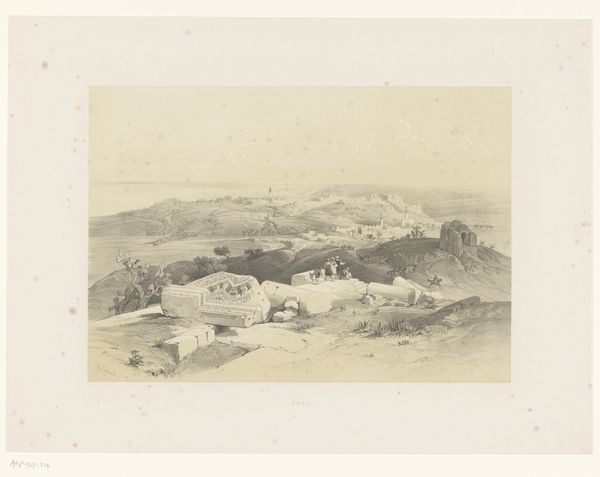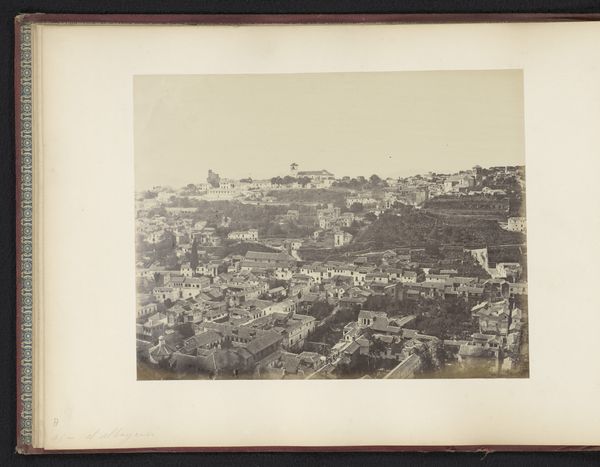
Dimensions: height 165 mm, width 216 mm, height 252 mm, width 304 mm
Copyright: Rijks Museum: Open Domain
Curator: The daguerreotype before us is entitled "View of the Rhône near Avignon," captured by Édouard Baldus in 1856. The scene depicts the Rhône River with the city of Avignon in the background. Editor: My first thought is how still it feels. Despite being a city scene, there’s a certain serenity evoked by the composition and soft tonal range. It feels balanced but reserved. Curator: Balance is definitely key here. Note the layering - the rough foreground, the still river bisecting the composition, and the city itself resting along the horizon line. It's a beautifully constructed interplay of textures. Considering it’s a daguerreotype, the detail achieved is astonishing. Editor: I find it poignant, though, to view this idealized cityscape through today's lens. The absence of human presence within the image strikes me. The rapid industrialization during the mid-19th century deeply affected labor and the environment. Do you think that Baldus, in his romanticized view, chose to intentionally exclude that reality from his frame? Curator: Perhaps. Or perhaps his priority lay within capturing the interplay of light and form, creating a scene in which each formal element reinforces the next. See how the angle of light delicately strikes the buildings in Avignon, enhancing the visual depth. His use of the daguerreotype captures an objective moment that is simultaneously beautiful and calculated. Editor: But even the notion of objective representation can be scrutinized when viewed in its cultural context. The absence of social commentary in such views often upholds the status quo and power structures prevalent during that era. In the case of Baldus, how did state-sponsored work shape his images? Curator: Absolutely, and there is no definitive way of interpreting his motives. Still, even in our modern framework, Baldus offers a composition to behold with clear horizontal lines. The image exemplifies photographic techniques within romanticism. The mirrored surfaces and the manipulation of depth create harmony within form. Editor: Perhaps we both find value in considering Baldus' work through different theoretical frameworks. It certainly encourages dialogue between historical analysis and aesthetic value! Curator: Precisely! By uniting diverse schools of thought, we are gifted with richer, more complete conclusions of works of art.
Comments
No comments
Be the first to comment and join the conversation on the ultimate creative platform.
